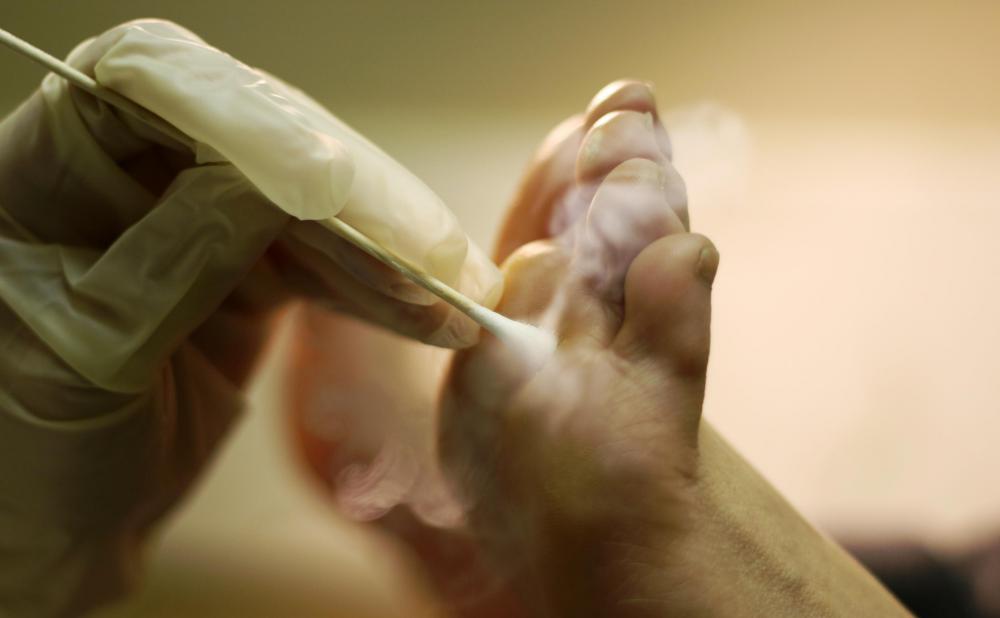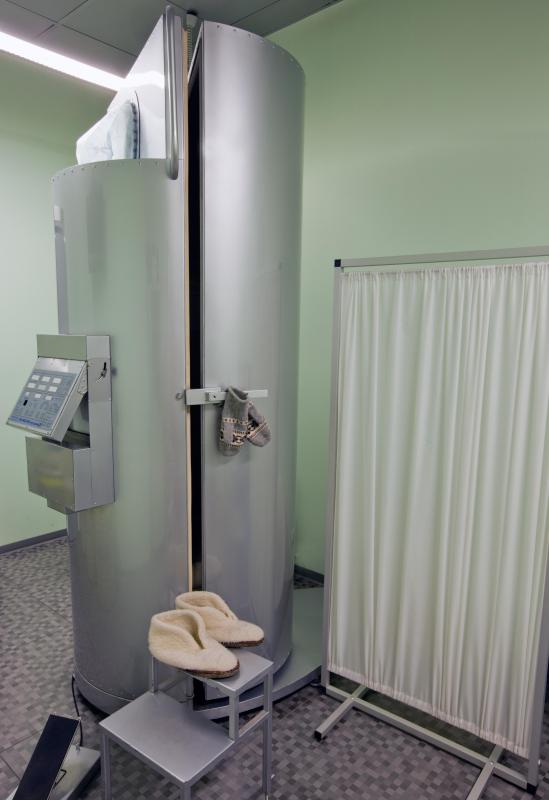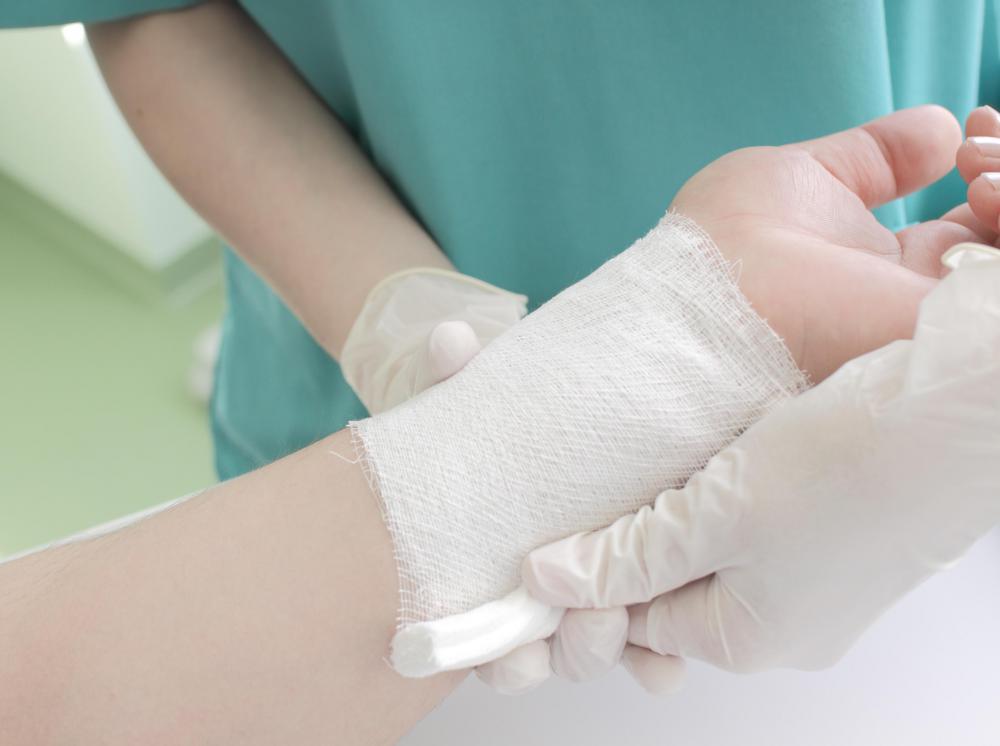At WiseGEEK, we're committed to delivering accurate, trustworthy information. Our expert-authored content is rigorously fact-checked and sourced from credible authorities. Discover how we uphold the highest standards in providing you with reliable knowledge.
What is Cryotherapy?
Cryotherapy, also known as cryosurgery, is a technique which involves the use of extremely low temperatures to destroy abnormal cells. This technique was first applied to benign growths on the skin. Eventually, practitioners refined and developed cryotherapy so that it could be used internally and on malignancies. This minimally invasive medical technique is available in many hospitals and clinics around the world to treat a variety of issues.
In a cryotherapy session, very cold temperatures are focused on a site where cells are growing abnormally so that the cells freeze through. The cells are then allowed to thaw slowly. The freeze-thaw cycle usually generates cell damage, killing the cells so that they will not continue to reproduce. In some treatments, especially for large growths, multiple freeze-thaw cycles may be required to address the entire growth and ensure that the margins of the growth have been treated as well. The patient is bandaged and allowed to leave, and within a few days, a small scab forms and falls off, leaving normal skin behind.

There are several different techniques which can be used for cryotherapy, ranging from dipping a swab into liquid nitrogen and applying it directly to the site to using superchilled probes to deliver targeted freezing dosages to growths inside the body with the assistance of ultrasound to guide the placement of the probe. Patients typically experience some discomfort during the freezing stage of the procedure, but they do not require local anesthetic or other pain management techniques, except in the case of internal procedures.

Classically, cryotherapy is used to treat areas of uncontrolled or suspicious cell growth, and it can address aesthetic issues such as warts and moles as well. It can also be used to manage chronic pain by freezing specific nerves so that they cannot continue to fire. This technique requires the practitioner to isolate the particular nerve involved and to freeze the nerve carefully to avoid damage to surrounding nerves. When practiced properly, it can bring considerable relief to patients struggling with chronic pain.

When cryotherapy is an option for a patient, a doctor will discuss the specific procedure and its potential risks. The biggest risk from cryotherapy is the potential for infection at the site, or the risk that the cryotherapy will not completely eradicate the rogue cells, allowing the growth to return. Doctors take a number of precautions to reduce the risks of a bad outcome, including providing meticulous aftercare directions to patients so that they know how to take care of the wound while it heals.
AS FEATURED ON:
AS FEATURED ON:
















Discussion Comments
Cervical cryotherapy used to be the preferred treatment for dysplasia. But it's not anymore because it doesn't allow biopsies like other treatments since it destroys tissues.
@burcinc-- Yes, I've had it done for warts and it was very easy. It only took like a minute and it worked.
The doctor will just take some liquid nitrogen and apply it on the wart to freeze it. The only thing you will feel is cold, there is no pain involved.
I didn't get a scar, although I've heard that some bigger warts can leave a scar when treated with cryotherapy treatment. Ask your doctor about that. There might be a scar cream you can use after the treatment.
Has anyone had cryotherapy done for warts?
My doctor had told me that if the topical treatments don't work for the warts on my hand, I could have cryotherapy done.
Does it hurt? And does it leave a scar?
Post your comments